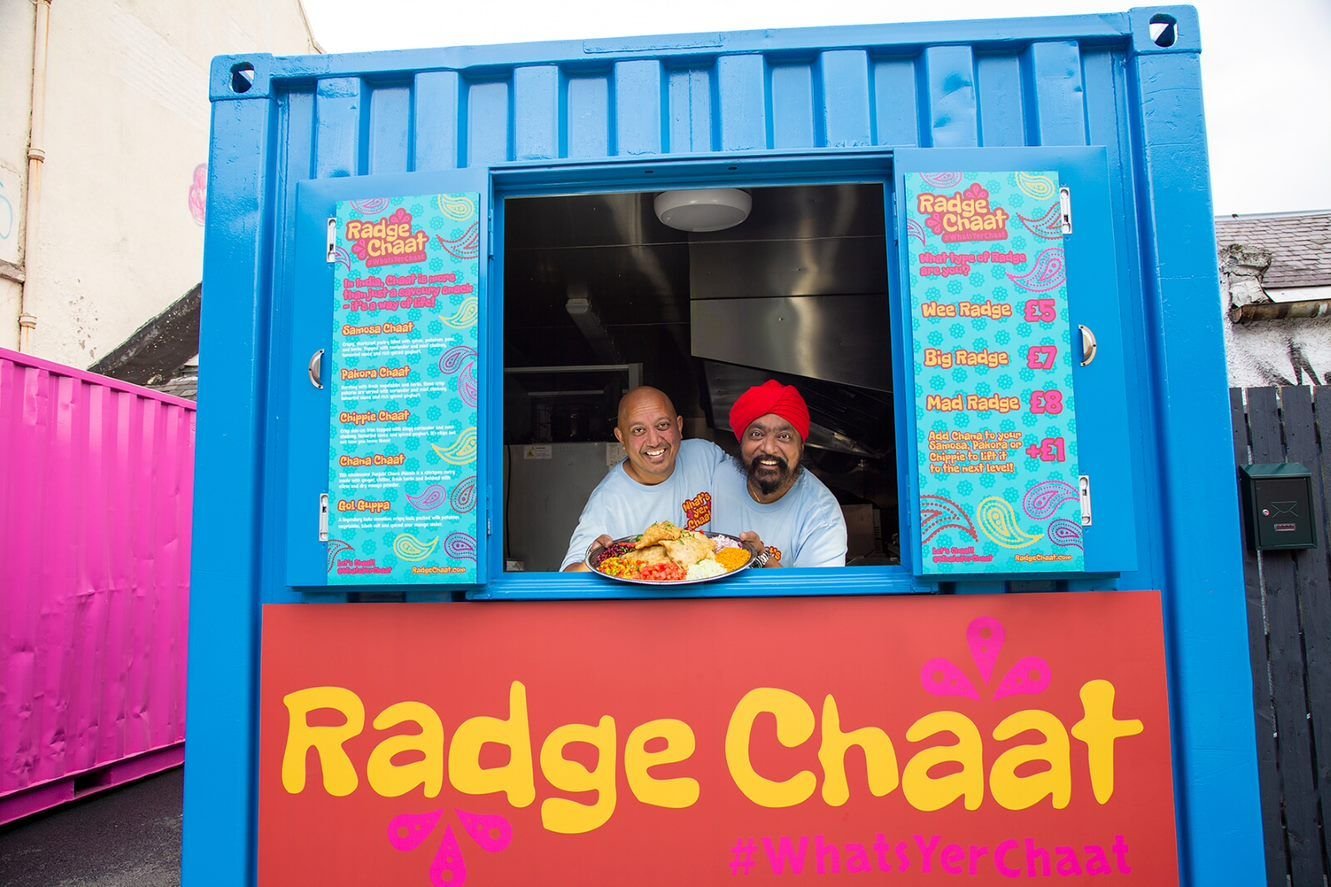Street food has been around for millennia. It is not just a passing fashion, but a trend that has travelled with us over time, giving us an insight into the way people have lived, and why.
So what is street food? It is typically a form of meal that is cooked, made and eaten on the street, in a market, or any other open public place. It is traditionally known for being cheaper and quicker than restaurant food, and therefore perfect for those on the go. It could be sold from a food truck, a cart, a kiosk, or even a table, and is popular in almost every country in the world, with over 2.5 billion people claiming to take part daily [1].
Despite its traditional roots originating from a need to feed the working class, the street food scene today has been reinvented as a result of globalisation and media attention. It now serves to preserve indigenous food cultures around the world and has become glam, gourmet and trendy. It has become increasingly popular in more recent years due to the changing eating habits of the pandemic, which have led celebrity chefs such as Tony Singh MBE to take to the streets.
This article will explore the history of street food culture, the rise of street food in the UK during the pandemic, and some of the best street food Edinburgh has to offer.
The History of Street Food Culture
The history of street food dates back many civilisations, as it has existed ever since the first urban settlements were created tens of thousands of years ago. Its origins vary from culture to culture, and can help shape our knowledge of different cuisines.
The very first evidence of street food stems back to the Ancient Greeks, who prepared and sold small portions of fried fish on the streets. From Greece, the concept spread to the Roman world, where it became a means of nourishing the poor, feeding over half of the population who did not have the means to cook at home. Ready-to-eat cooked food such as stews were sold in ‘Thermopoliums’, which were small kitchens opening out onto the streets.
An Ancient Roman Thermopolium excavated in Pompeii.
Across the globe in Asia, street food was also born for the primary need to feed the poor cheaply, and was the main source of income for many. Street food has its deep roots in India, where it is said to have originated in the 1800s, dating back to Mumbai’s factory workers who would be handed meals on the street as they left the factory using the days’ left over vegetables and spices. Today, every city in India is lined with street food vendors selling local favourites, and Indian street food is known worldwide for its rich taste and diversity.
Street food being served on the streets of India.
Just because the concept of street food was born poor, doesn’t mean that it has always been considered of little worth. It is thanks to globalisation and the birth of travel and trade that local street food has been able to travel the world and become a global representation of a local place’s traditions, culture and identity, as it keeps their eating habits alive. The days of nationalised street food are largely coming to an end, as you can now find street foods from every continent in most major cities, supported by a corresponding global rise in pop-up culture and a widespread thrive for instant gratification.
Global Street Food Market in London, UK.
Some of the most popular global street food dishes today include Aloo Chaat from Northern India, Tacos from Mexico, crepes from France and Bahn Mi from Vietnam, which have now all become ingrained in global food culture. The media has had a huge part to play in the reinvention of street food culture, with many TV shows and social media platforms documenting the history of different food cultures and up and coming trends, allowing them to become increasingly popular with ‘foodies’ in countries of the western world.
Has the Global Pandemic brought about a Street Food Revolution in the UK?
The Street Food scene in the UK has been growing for a long time, but has become increasingly popular in the past couple of years, in a pandemic world where restaurants are closing and socialising outdoors has become the norm.
Many vendors have partnered with large companies to organise outdoor street food events, and lots of high quality chefs and restaurants owners have adapted to cater for Covid-safe pop-up dining, serving their exclusive dishes from trendy converted trailers, campervans and huts. As a result, much has been said about how the pandemic has exposed the fallibility of larger restaurant chains and opened the door for smaller independent businesses.
Street food served from a converted bus at The Edinburgh Fringe Festival.
A lot of street food newbies have been introduced to a whole new world of dining, where they can support local businesses, explore different cuisines and enjoy the experience of watching food being prepared in front of them.
The rise of Radge Chaat – The Best Street Food in Edinburgh
A familiar face on UK television, Tony Singh MBE, has recognised this as a welcome trend for the culinary industry. Tony is a Scottish celebrity chef who, like many of us, has been faced with the hospitality challenges of the pandemic and has been forced to think outside the box (or inside it in his case!).
Tony Singh MBE and brother Lucky at the opening of Radge Chaat.
Tony became inspired by the emergence of the street food scene in Edinburgh when he was unable to continue hosting his bespoke at-home ‘Supper Clubs’ due to social distancing restrictions. He could see that eating habits were changing and people were starting to meet friends to eat outside more. In order to adapt to these changes, alongside his brother Lucky, he set up ‘Radge Chaat’ in a converted bright blue shipping container in the Tollcross area of Edinburgh, where he serves Indian street food called Chaat.
Chaat describes an entire category of Indian street foods that are traditionally sold from roadside stalls and carts across India. The snacks are characterised by their sweet, sour, spicy, tangy, and crunchy taste. The base of any good Chaat is samosa or pakora, topped with coriander, chutney and cooling fresh yoghurt. Crunchy ingredients such as fried diced potato and spiced chickpeas are added, before the whole dish is finished with fresh chopped vegetables, and a sprinkling of Chaat Masala, an Indian spice blended with black salt. It is a flavour sensation that makes the taste buds come alive.
You can view Radge Chaat’s delicious menu online here.
Customer photos of Chaat dishes from Radge Chaat.
Indian street food is considered by many to be the hidden gem of Indian cuisine, and the rich culinary diversity of India has led to the creation of a wide variety of different Chaat dishes. Chaat is always different depending on which region it originates from, so the ingredients used are always very local and seasonal, and at Radge Chaat fresh Scottish ingredients are used. Tony has said that ‘in India Chaat is more than just a savoury snack, it’s a way of life’, which reflects the ways in which street food plays a part in keeping Tony Singh’s heritage alive in Edinburgh, where we can see the stark contrast between street food’s humble beginnings in India. In this way, learning about the history of street food culture enables us to gain knowledge about the rich history of a country and the people who have inhabited it.
Tony and Lucky serving a customer at Radge Chaat.
The Best Street Food in Edinburgh: The Tollcross Street Food Containers
The cultural awakening of the taste buds doesn’t stop there, as Radge Chaat is one of a trio of bright shipping containers bringing the colour of the global street food scene to Edinburgh. They combine many tastes and flavours from around the world, creating a delicious complimentary collection of dishes.
The Tollcross Street Food Containers in Edinburgh.
Neighbouring Radge Chaat is Glasgow’s Exile Cooks, which offers a mix of global street food from soft shell crab to tacos. On the other side is Kaptain Karage, which is run by Tony’s son Balraj, and serves delicious Japanese street food such as crispy fried chicken and cauliflower.
Food from Radge Chaat, Exile Cooks and Kaptain Karage: photos by Peter Simpson
Immerse Yourself in the Rich History of Street Food
This article has reflected on the fact that street food is one of the few constants that has travelled with us over time. Street food culture transcends its humble beginnings and now brings rich tastes to all members of society on the go. From the history of street food, we can gain valuable insight into the way people have lived, and why, by understanding what cuisines were available to them.
So why not immerse yourself in the rich history of street food? Head down to 5 West Tollcross to get a glimpse of culture and tradition by treating your taste buds to flavours from around the world, through trying the best street food Edinburgh has to offer.
Radge Chaat is open every Tuesday and Wednesday from 12pm-3pm, and Thursday to Saturday from 12pm-10pm.
And don’t forget to follow us on social media via the links below to keep up to date with all our latest news, updates and Chaat…
References
The Food and Agriculture Organization (2007): https://web.archive.org/web/20150409051923/http://www.fao.org/AG/magazine/0702sp1.htm











